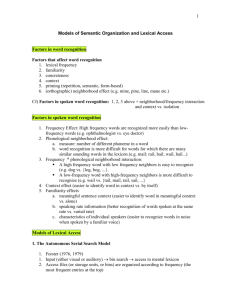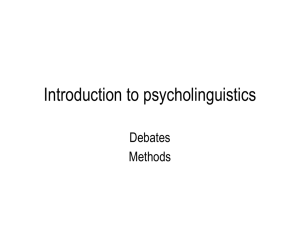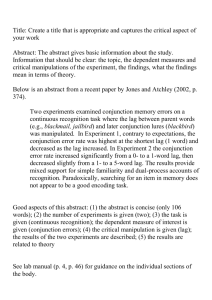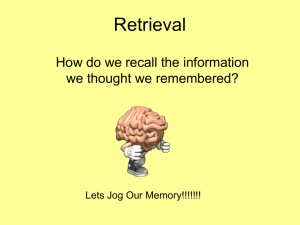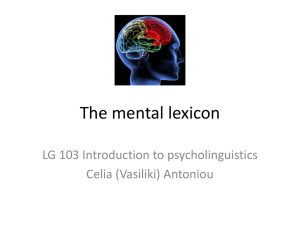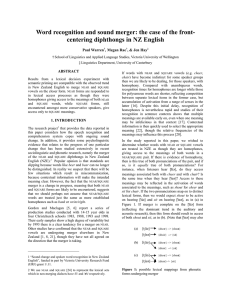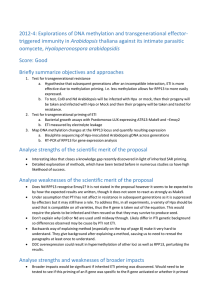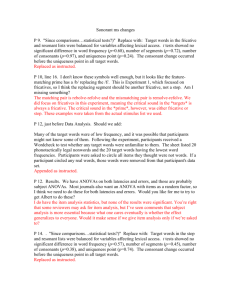Semantic Priming: Letter Decision Task vs. Lexical Decision
advertisement
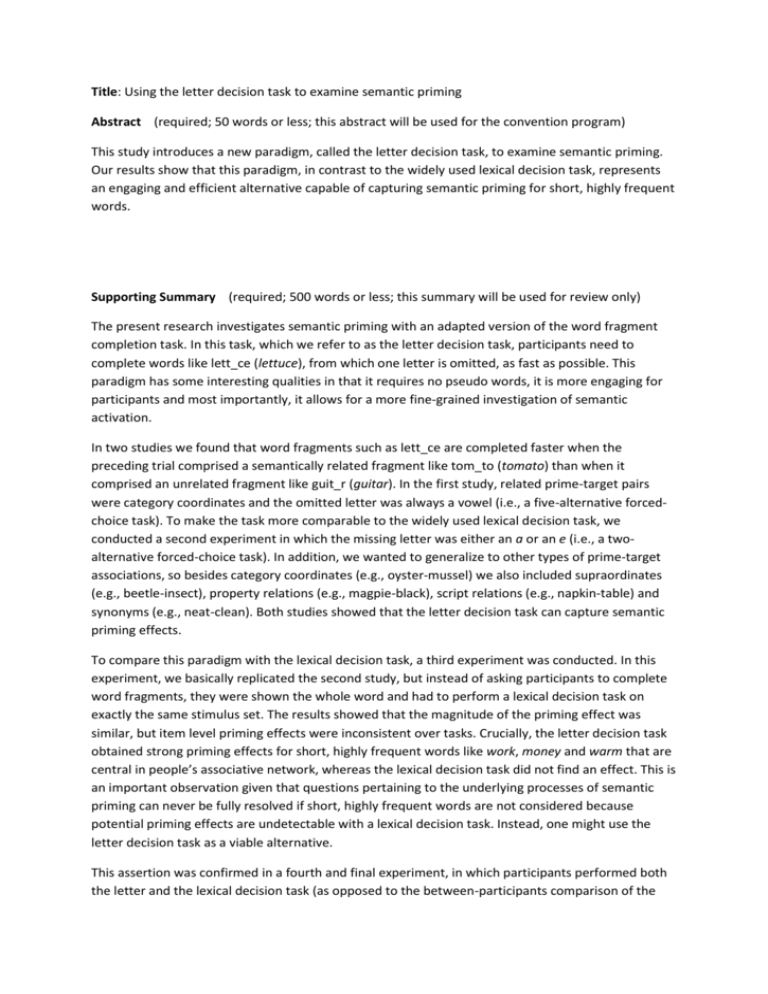
Title: Using the letter decision task to examine semantic priming Abstract (required; 50 words or less; this abstract will be used for the convention program) This study introduces a new paradigm, called the letter decision task, to examine semantic priming. Our results show that this paradigm, in contrast to the widely used lexical decision task, represents an engaging and efficient alternative capable of capturing semantic priming for short, highly frequent words. Supporting Summary (required; 500 words or less; this summary will be used for review only) The present research investigates semantic priming with an adapted version of the word fragment completion task. In this task, which we refer to as the letter decision task, participants need to complete words like lett_ce (lettuce), from which one letter is omitted, as fast as possible. This paradigm has some interesting qualities in that it requires no pseudo words, it is more engaging for participants and most importantly, it allows for a more fine-grained investigation of semantic activation. In two studies we found that word fragments such as lett_ce are completed faster when the preceding trial comprised a semantically related fragment like tom_to (tomato) than when it comprised an unrelated fragment like guit_r (guitar). In the first study, related prime-target pairs were category coordinates and the omitted letter was always a vowel (i.e., a five-alternative forcedchoice task). To make the task more comparable to the widely used lexical decision task, we conducted a second experiment in which the missing letter was either an a or an e (i.e., a twoalternative forced-choice task). In addition, we wanted to generalize to other types of prime-target associations, so besides category coordinates (e.g., oyster-mussel) we also included supraordinates (e.g., beetle-insect), property relations (e.g., magpie-black), script relations (e.g., napkin-table) and synonyms (e.g., neat-clean). Both studies showed that the letter decision task can capture semantic priming effects. To compare this paradigm with the lexical decision task, a third experiment was conducted. In this experiment, we basically replicated the second study, but instead of asking participants to complete word fragments, they were shown the whole word and had to perform a lexical decision task on exactly the same stimulus set. The results showed that the magnitude of the priming effect was similar, but item level priming effects were inconsistent over tasks. Crucially, the letter decision task obtained strong priming effects for short, highly frequent words like work, money and warm that are central in people’s associative network, whereas the lexical decision task did not find an effect. This is an important observation given that questions pertaining to the underlying processes of semantic priming can never be fully resolved if short, highly frequent words are not considered because potential priming effects are undetectable with a lexical decision task. Instead, one might use the letter decision task as a viable alternative. This assertion was confirmed in a fourth and final experiment, in which participants performed both the letter and the lexical decision task (as opposed to the between-participants comparison of the second and the third experiment). This study featured only short, highly frequent words and its results revealed a robust priming effect in the letter decision task, while the lexical decision task failed to find an effect. Furthermore, participants conceived the letter decision task as more engaging and if given the choice, they would prefer the letter decision task over the lexical decision task. Taken together, the letter decision task may prove an attractive alternative to examine semantic priming.

